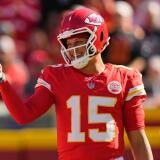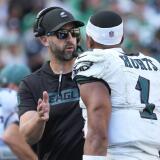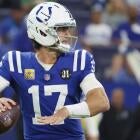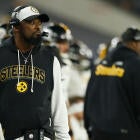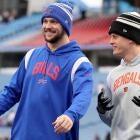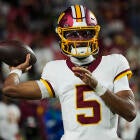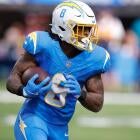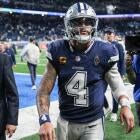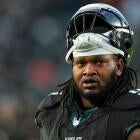For Redskins fans, the love for Joe Gibbs is equal to the loathing of Dan Snyder
Good, Bad, Ugly and Bizarre in Washington: From Gibbs' glory days to Daniel Snyder's fruitless regime

Back in May the NFL writers and editors at CBSSports.com gathered together to discuss the key figures and moments of every NFL franchise in the Super Bowl era. Before long we were discussing every team's best and worst moments, along with their most-hated players and coaches, as well as some of the more bizarre things each team has been involved in. That spirited discussion produced this series -- the Good, Bad, Ugly and, sometimes, Bizarre moments for every team. We continue with the Washington Redskins.

The Good
The first Joe Gibbs era in Washington
Not much was known about Joe Jackson Gibbs when he was plucked to take over coaching the Washington Redskins back in 1981. Jack Pardee had been fired after a middling stint, and mercurial owner Jack Kent Cooke was hell bent on hardware. He and general manager Bobby Bethard settled on a 40-year-old Gibbs, a bright but not exactly well-known member of Don Coryell's innovative staff in San Diego.
It turned out to be the best decision the franchise has ever made.
The glory days were just ahead, and it's difficult to think of any truly resonating moment in the Redskins' history that did not occur under Gibbs' hand, the first time around (we'll get to Gibbs 2.0 in a little bit).
Think of the iconic moments in the Redskins' history. John Riggins rumbling all over the Dolphins in Super Bowl XVII. Doug Williams becoming the first African-American quarterback to win a Super Bowl. One-hit wonder Timmy Smith setting the Super Bowl rushing mark. And then there's Gibbs being able to pull all of his starters and play backups in a blowout win over Buffalo for his third and final Lombardi Trophy.
All of those championships point back to Gibbs.
He is the constant that defines this greatest stretch of play by Washington in the modern era. Gibbs' run from 1981-92, culminating with what was seen at the time as a shocking decision to "retire," is as good as it gets for this franchise and ranks among the best for any team.
It began with players unsure of what Gibbs was all about. It also began with five straight losses and growing turmoil around the team. But he rallied Washington to an 8-8 finish that first season and followed that with a shocking run to the Super Bowl in his second year at the helm.
Gibbs was named the AP Coach of the Year in 1982 and 1983 (a 14-2 regular season record and a 51-7 smashing of the Los Angeles Rams in the playoffs before the other L.A. team, the Raiders, defeated them in the Super Bowl). They won the NFC East again the following year, missing the postseason in 1985 despite a 10-6 record, lost the NFC title game in '86 and totally destroyed John Elway and the Broncos in the Super Bowl in 1987.
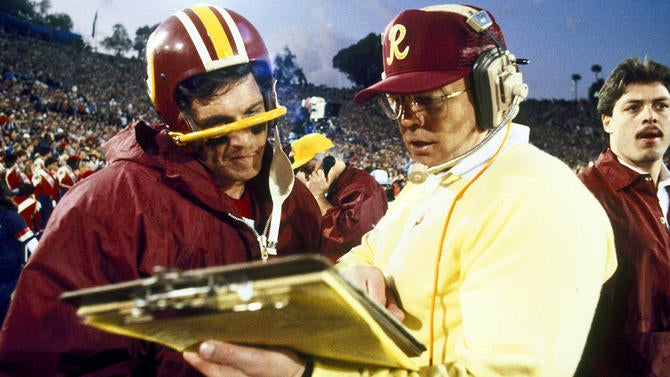
They won it all again in 1991, with Gibbs the toast of Washington. His 24/7 work habits, however, were taking a toll on his family life. He grew more in touch with his spiritual side and began to feel both burned out and called in a different direction when he decided to leave the NFL in 1993, a move that rocked the franchise. (He would go on to greatness with Joe Gibbs Racing in NASCAR and eventually return to coaching in 2004.)
Gibbs left after 12 amazing years on the job, making the playoffs eight times, suffering just one losing season and winning three titles with three different quarterbacks. He went 124-60 in the regular season and 16-5 in the playoffs. This franchise has never come close to the heights or consistency of the first Gibbs era or at any time since.
The Bad
The Daniel Snyder regime in Washington
It takes a lot for an owner to become something of a national boogeyman, the personification of every bad stereotype about pro sports owners. For him to seemingly relish in playing the heel role along the way -- to actually elevate to a form of weird performance art (charging for parking at training camp, lusting after Jeff George, reveling in a controversial nickname, cutting down protected trees in his yard, threatening lawsuits here and there, alienating former players, I could go on and on) -- would be Vaudevillian were it not for the fact that Redskins fans have actually had to live through this grief.
Oh, there were high hopes at the beginning when Snyder, a lifelong fan of the team from those Gibbs years, ended up with the team through some bizarre circumstances. There were the tales of him bonding with his family over the games and the lucky Redskins belt buckle he wore. But there were also horror stories quickly being told around the building about the kind of owner he was and the type of regime he would run.
Fear and despair quickly outpaced any enthusiasm, and it wasn't all that long before Norv Turner was the first head coach to feel his wrath and the term "interim head coach" took on a familiar tone.
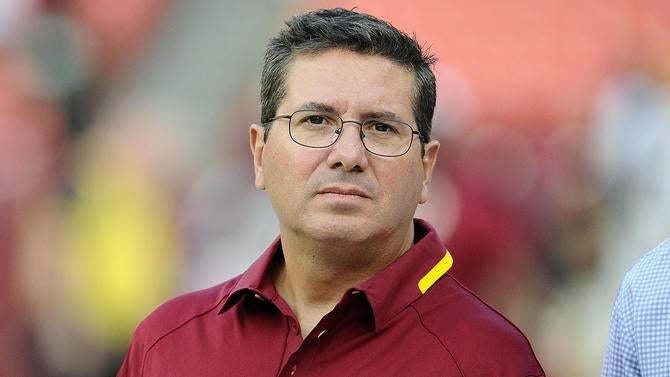
Snyder turned the team into a full-scale marketing outlet, making sponsorship deals for seemingly everything but the Porta Potties at training camp. His meddling ways quickly turned off football people and his cronyism to certain uber-loyal employees would continue to divide the building for over a decade.
From the moment he chose to bring back a banished executive who would come to embody the futility of this era (Vinny Cerrato) over coach Marty Schottenheimer despite an 8-3 finish with Tony Banks at QB, a decade of Redskins football was essentially sent into the abyss, and they are still trying to crawl back to respectability.
Oh, there was bombast and gluttony and lessons learned trying to win the offseason every winter -- from Deion Sanders and Bruce Smith to George (and Adam Archuleta and Brandon Lloyd and Albert Haynesworth and ... we could go on and on here, too). There was the constant public relations disasters and the revolving door of quarterbacks and coaches and coordinators. Dysfunction reigned for the better part of his tenure and even the second Gibbs tenure was a failure, with one playoff victory and another abrupt departure from the head coach with a year left on his deal.
And don't forget the brief time spent with the Ol' Ball Coach, Steve Spurrier, who if nothing else further perfected his golf swing while in charge. There was the carnage of the Mike Shanahan tyranny that has basically all been sorted out by now, finally, with RG3 leaving Washington in the same ignominious fashion as did Shanahan. But oh the fireballs Shanahan threw on the way out making a charade out of that final lost season.
Consider: Since 1999, the Redskins have five winning seasons and six seasons with five wins or less. They are on their seventh coach in that span and have never won more than eight games in consecutive seasons. They have finished last in their division eight times. They have played two home postseason games and have one playoff victory total.
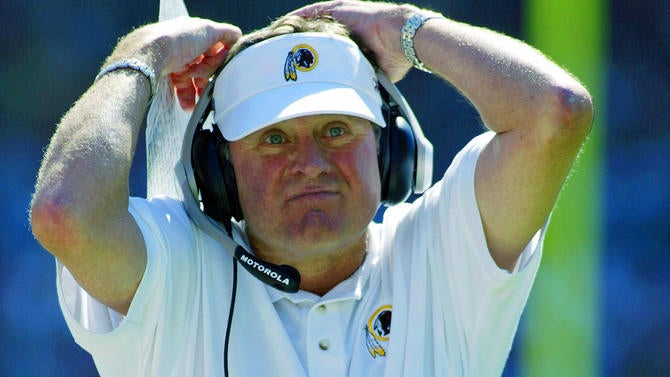
Maybe, finally, with a real football man in charge of the roster (GM Scot McCloughan), the team is entering a stage of continuity and steady growth. If so, it only took damn near 20 years under this owner to get there.
The Ugly
The night Joe Theismann broke his leg before a national TV audience
Few items in this study of all 32 NFL teams will produce as visceral a response as this among anyone who saw it occur on Monday Night Football or the millions more who learned of it over time or came upon it on YouTube.
When you think ugly football moments -- truly gruesome -- it's hard not to flash back to Nov. 18, 1985, and the night Lawrence Taylor, one of the most destructive defensive players of his or any generation, came down on the leg of Redskins quarterback Joe Theismann and snapped it. And, yes, snapped is the appropriate verb, sadly, as the gruesome injury created national attention and the former Super Bowl winning quarterback would never play again.
Trying to find a way to block Taylor had become one of the more difficult assignments in all of professional football by this time, with the linebacker on his way to making a run at the NFL record books while derailing his career several times with his off-field behavior along the way. For the Redskins and coach Joe Gibbs, who had to face Bill Parcells and the Giants twice a year, it was a massive chore. New York's vaunted pass rush was not fooled by a flea flicker on this night, while the Redskins' best pass protector, Joe Jacoby, was not playing due to injury.
Those playing in the game that night still speak in hushed tones and with grimaced faces when talking about the noise that was made when Taylor snapped both the tibia and fibula in Theismann's right leg, with one of the bones breaking the skin.
The Redskins went on to win the game with Jay Shroeder taking over, and finding ways to win big games with a carousel of starting quarterbacks would end up in some ways defining the first Gibbs era (the team has yet to truly break the cycle since then, really).
Theismann went 20 years without watching any replay of the heinous injury until finally sitting down to relive it, and it undoubtedly still haunts many who witnessed it on the field that night.
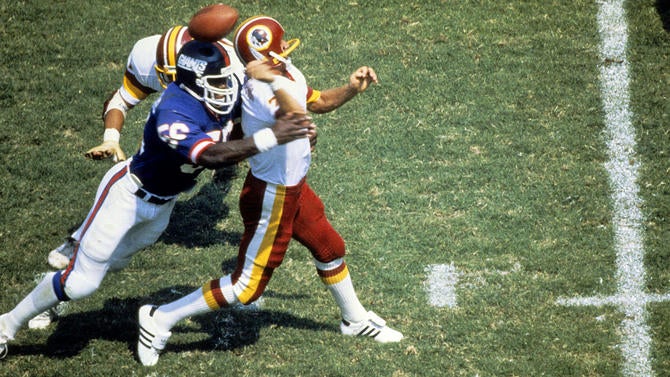
The Bizarre
Mark Moseley -- a kicker! -- winning the MVP award
One could easily argue that the quality of kicking in the NFL has never been greater. More kickers are mastering longer field goals, and in recent years kickoff rules and extra point rules have been altered to try to make this part of the game more competitive.
And even now, in this period of kicking greatness, it seems unfathomable that a kicker could be named the league's Most Valuable Player. So for it to have actually happened, 35 years ago when guys ran straight into the ball and kicked with their toes and the science of the endeavor was far less sophisticated and guys weren't cranking out 55-yarders like they were nothing, is truly baffling.
But it happened. And Mark Moseley was the guy who did it, back in 1982. Go figure.
Yeah, square-footed cleats and all.
That, my friends, is truly bizarre.
This was a Redskins team with a high-profile quarterback and a future Hall of Fame running back (John Riggins), receiver (Art Monk) and guard (Russ Grimm). This was a year in which Dan Fouts averaged more than 300 passing yards per game, and it was not like other players were not having fine seasons at number of the positions in which dudes usually receive MVP votes. Yet Moseley got the bulk of the AP votes.
And it's not like Moseley had been shattering records for years, or was some sort of household name or outlier stud kicker. He was basically just a guy, and the Skins has already drafted his replacement. And when Moseley finally did win the job, he still wasn't allowed to handle kickoffs.
Not exactly the backdrop for what would become one of the most memorable kicking seasons in history.
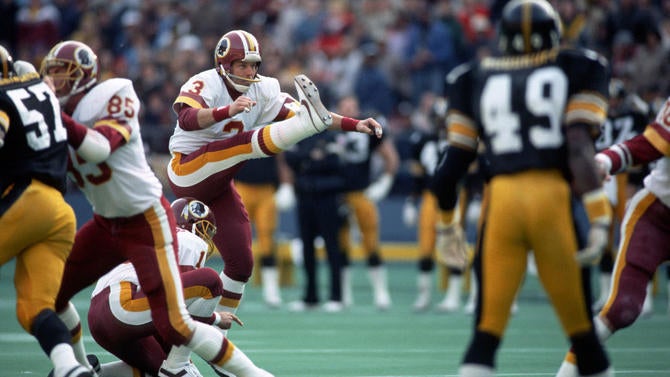
Keep in mind, this was a strike-shortened season, which made everything a little off. Moseley was more-or-less automatic, including nailing a kick to cement Washington's playoff berth. He was big in the fourth quarter and in overtime, and set a record at the time when he connected on 21 straight field goals, but he also managed to miss three extra points along the way.
The journeyman never attempted a kick over 50 yards, and his long was 48. He saved a sluggish Skins offense several times and made a bunch of clutch kicks, and that somehow ended up being enough to win the award. And by 1985 he was more or less on his way out of the league.
* * *
More Good, Bad, Ugly and the Bizarre
Where's your favorite NFL team? Check the schedule below
AFC East
- June 13: New England Patriots
- 14: Miami Dolphins
- 15: New York Jets
- 16: Buffalo Bills
NFC East
- June 17: Dallas Cowboys
- 20: New York Giants
- 21: Philadelphia Eagles
- 22: Washington Redskins
AFC West
- June 23: Denver Broncos
- 24: Oakland Raiders
- 27: Kansas City Chiefs
- 28: San Diego Chargers
NFC North
- June 29: Chicago Bears
- 30: Detroit Lions
- July 1: Green Bay Packers
- 4: Minnesota Vikings
AFC South
- July 5: Houston Texans
- 6: Tennessee Titans
- 7: Jacksonville Jaguars
- 8: Indianapolis Colts
NFC South
- July 11: Carolina Panthers
- 12: Tampa Bay Buccaneers
- 13: Atlanta Falcons
- 14: New Orleans Saints
AFC North
- July 15: Pittsburgh Steelers
- 18: Baltimore Ravens
- 19: Cincinnati Bengals
- 20: Cleveland Browns
NFC West
- July 21: Arizona Cardinals
- 22: Los Angeles Rams
- 25: Seattle Seahawks
- 26: San Francisco 49ers





